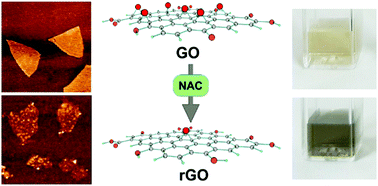Biocompatible N-acetyl cysteine reduces graphene oxide and persists at the surface as a green radical scavenger†
Abstract
We demonstrate that N-acetyl cysteine (NAC) reduces graphene oxide (GO) at room temperature. This represents a new green method to produce reduced GO (rGO). NAC adheres to the rGO surface as demonstrated by several spectroscopy techniques and avoids GO-mediated oxidation of glutathione. This method offers new opportunities for the production of green biocompatible rGO and NAC-based therapies.



 Please wait while we load your content...
Please wait while we load your content...